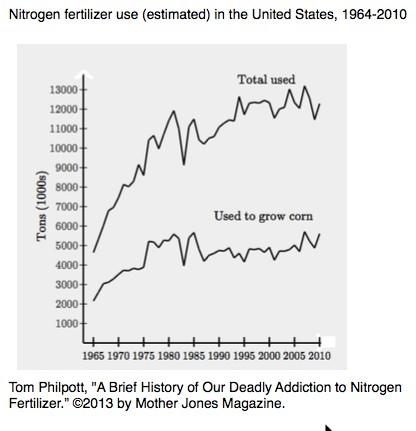Questions 1-11 are based on the following
passage.
This passage is excerpted from the Ecological Society of America, "Human Alteration of the Global Nitrogen Cycle: Causes and Consequences." © 1997 by the Ecological Society of America.
Nitrogen is an essential component of proteins, genetic
material, chlorophyll, and other key organic molecules. All
organisms require nitrogen in order to live. It ranks behind
Line oxygen, carbon, and hydrogen as the most common chemical
5 lement in living tissues. Until human activities began to
alter the natural cycle, however, nitrogen was only scantily
available to much of the biological world. As a result,
nitrogen served as one of the major limiting factors that
controlled the dynamics, biodiversity, and functioning of
10 many ecosystems.
The Earth’s atmosphere is 78% nitrogen gas, but most
plants and animals cannot use nitrogen gas directly from the
air as they do carbon dioxide and oxygen. Instead, plants -
and all organisms from the grazing animals to the predators
15 to the decomposers that ultimately secure their nourishment
from the organic materials synthesized by plants - must wait
for nitrogen to be “fixed,” that is, pulled from the air and
bonded to hydrogen or oxygen to form inorganic compounds,
mainly ammonium and nitrate, that they can use.
20 The amount of gaseous nitrogen being fixed at any given
time by natural processes represents only a small addition to
the pool of previously fixed nitrogen that cycles among the
living and nonliving components of the Earth’s ecosystems.
Most of that nitrogen, too, is unavailable, locked up in soil
25 organic matter - partially rotted plant and animal remains -
that must be decomposed by soil microbes. These microbes
release nitrogen as ammonium or nitrate, allowing it to be
recycled through the food web. The two major natural
sources of new nitrogen entering this cycle are nitrogen-
30 fixing organisms and lightning.
Nitrogen-fixing organisms include a relatively small
number of algae and bacteria. Many of them live free in the
soil, but the most important ones are bacteria that form close
symbiotic relationships with higher plants. Symbiotic
35 nitrogen-fixing bacteria such the the Rhizobia, for instance,
live and work in nodules on the roots of peas, beans, alfalfa,
and other legumes. These bacteria manufacture an enzyme
that enables them to convert gaseous nitrogen directly into
plant usable forms.
40 Lightning may also indirectly transform atmospheric
nitrogen into nitrates, which rain onto soil.
Quantifying the rate of natural nitrogen fixation prior to
human alterations of the cycle is difficult but necessary for
evaluating the impacts of human-driven changes to the global
45 cycling of nitrogen. The standard unit of measurement for
analyzing the global nitrogen cycle is the teragram
(abbreviated Tg), which is equal to a million metric tons of
nitrogen. Worldwide, lightning, for instance, fixes less than
10 Tg of nitrogen per year - maybe even less than 5 Tg.
50 Microbes are the major natural suppliers of new biologically
available nitrogen. Before the widespread planting of legume
crops, terrestrial organisms probably fixed between 90 and
140 Tg of nitrogen per year. A reasonable upper bound for
the rate of natural nitrogen fixation on land is thus about 140
55 Tg of nitrogen per year.
During the past century, human activities clearly have
accelerated the rate of nitrogen fixation on land, effectively
doubling the annual transfer of nitrogen from the vast but
unavailable atmospheric pool to the biologically available
60 forms. The major sources of this enhanced supply include
industrial processes that produce nitrogen fertilizers, the
combustion of fossil fuels, and the cultivation of soybeans,
peas, and other crops that host symbiotic nitrogen-fixing
bacteria. Furthermore, human activity is also speeding up the
65 release of nitrogen from long-term storage in soils and
organic matter.
Industrial fixation of nitrogen for use as fertilizer currently
totals approximately 80 Tg per year and represents by far the
largest human contribution of new nitrogen to the global
70 cycle. That figure does not include manures and other organic
nitrogen fertilizers, which represent a transfer of already-
fixed nitrogen from one place to another rather than new
fixation.
75 Until the late 1970s, most industrially produced fertilizer
was applied in developed countries. Use in these regions has
now stabilized while fertilizer applications in developing
countries have risen more dramatically. The momentum of
human population growth and increasing urbanization
80 ensures that industrial fertilizer production will continue at
high and likely accelerating rates for decades in order to meet
the escalating demand for food.